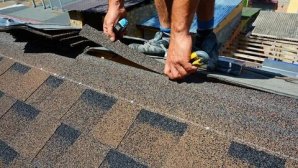Accurately calculating the square footage of a roof is an essential step in planning for repairs, replacements, or installing new shingles. The square footage determines the amount of materials required, the overall project cost, and even the time it will take to complete the job. While it may sound complex, with the right approach and understanding of your roof’s dimensions and pitch, you can get an accurate estimate without much difficulty. Here is How To Calculate Sq Footage Of Roof.
Why Roof Square Footage Matters
The square footage of a roof is not the same as the square footage of your home’s living space. Roofs often have slopes, overhangs, and varying shapes that make them larger than the footprint of the house. Calculating the exact size helps in purchasing the right amount of roofing materials, such as shingles, underlayment, and flashing, while also reducing unnecessary waste. It is also critical for contractors to provide precise quotes.
Step 1: Measure the Base Area
Start by measuring the length and width of your home’s base for each roof section. Multiply the length by the width to determine the base area of that section. For example, if one section of your roof measures 30 feet by 20 feet, the base area is 600 square feet. Repeat this process for all sections of your roof and then add them together.
Step 2: Factor in Roof Pitch
The pitch, or steepness, of the roof affects the total surface area. Roof pitch is typically expressed as a ratio of vertical rise to horizontal run, such as 4:12 or 6:12. A steeper roof has more surface area, meaning more materials are required. To account for pitch, you need to use a pitch multiplier. For example:
-
A 4:12 pitch has a multiplier of about 1.06.
-
A 6:12 pitch has a multiplier of about 1.12.
-
A 9:12 pitch has a multiplier of about 1.25.
Multiply the base area of each roof section by the appropriate pitch multiplier to get the true surface area.
Step 3: Account for Roof Features
Most roofs have additional features such as dormers, valleys, and overhangs. These can increase the total square footage. Measure and add these areas separately, then include them in your final calculation. Similarly, subtract areas that don’t require roofing, such as skylights and chimneys, to avoid overestimating material needs.
Step 4: Total Square Footage
Once you’ve accounted for pitch and features, add all the roof section areas together. The result will give you the total square footage of your roof. For example, if your base measurement is 1,500 square feet and your pitch multiplier brings it to 1,650 square feet, after adding dormers and subtracting skylights, you may end up with a final measurement of around 1,700 square feet.
Conclusion
Learning how to calculate the square footage of a roof helps homeowners and contractors plan effectively and reduce costs. An accurate calculation ensures the correct amount of roofing material is ordered and prevents delays during installation. While homeowners can perform these calculations themselves, consulting a roofing professional is always a good choice for precision and safety, especially when dealing with complex roof designs.
















